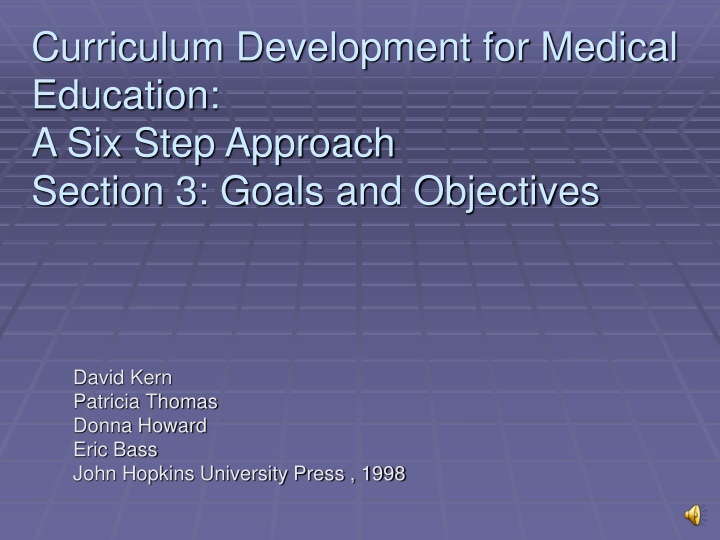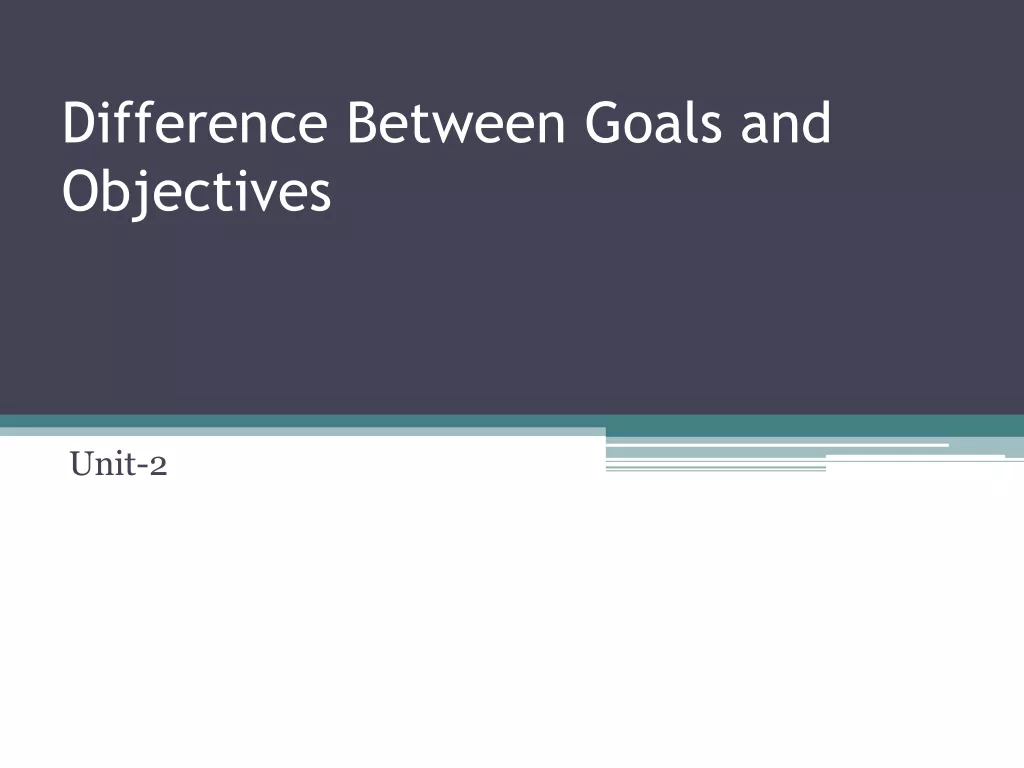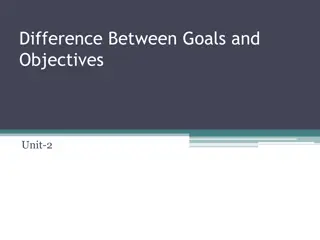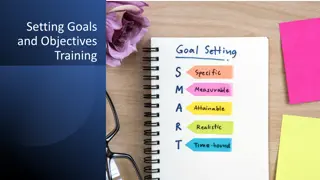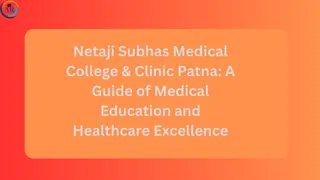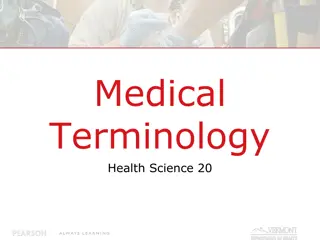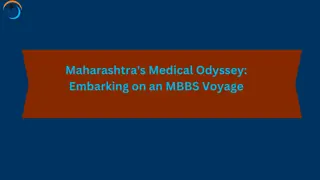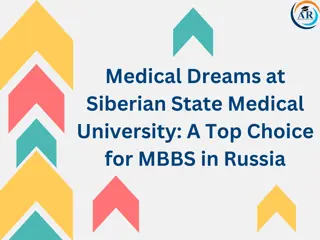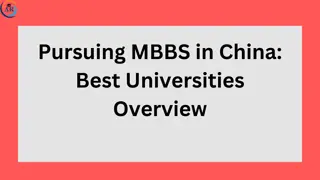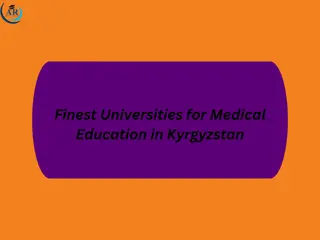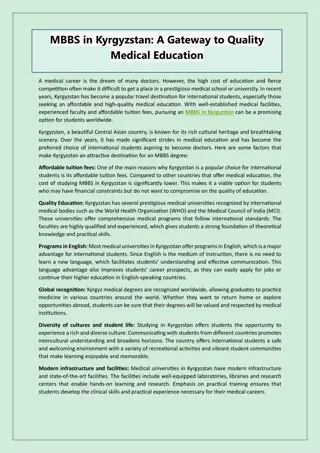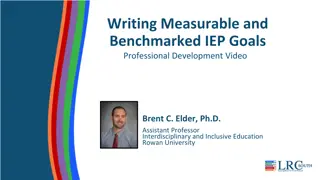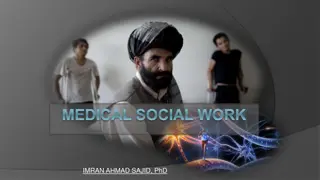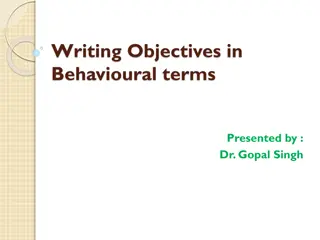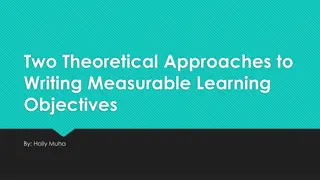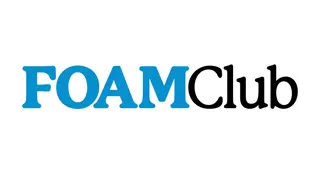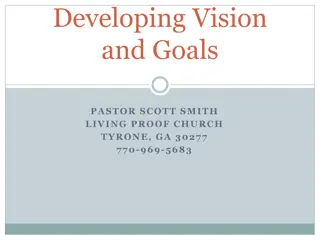Developing Medical Education Goals and Objectives
In this comprehensive guide, explore the crucial elements of setting goals and objectives in medical education. Learn how to formulate broad educational outcomes, create measurable methods to achieve these goals, and understand the importance of clear objectives. Discover various types of learner objectives and master the art of writing effective educational objectives. Gain insights into suggested wording for educational objectives and enhance your curriculum development skills.
Download Presentation

Please find below an Image/Link to download the presentation.
The content on the website is provided AS IS for your information and personal use only. It may not be sold, licensed, or shared on other websites without obtaining consent from the author.If you encounter any issues during the download, it is possible that the publisher has removed the file from their server.
You are allowed to download the files provided on this website for personal or commercial use, subject to the condition that they are used lawfully. All files are the property of their respective owners.
The content on the website is provided AS IS for your information and personal use only. It may not be sold, licensed, or shared on other websites without obtaining consent from the author.
E N D
Presentation Transcript
Curriculum Development for Medical Education: A Six Step Approach Section 3: Goals and Objectives David Kern Patricia Thomas Donna Howard Eric Bass John Hopkins University Press , 1998
Goals and Objectives Goal : broad educational outcomes Example Goal of PGY2 resident rotation in pain management : a PGY2 resident with the knowledge, attitudes and skills to manage an uncomplicated patient with post operative pain .
Objectives: measurable methods to achieve goals; how to get there; specific and measurable tasks Who will do what by when and how well? At the end of the pain rotation the PGY2 resident will be able to will have demonstrated the proficiency to perform an uncomplicated pain history and physical examination of a post operative patient . She will be able to present this patient to the pain attending . Additionally she will be able to prescribe and manage the dosing of parental and oral pain medication and remediate their side effects for satisfactory pain relief in that patient.
Importance of Goals and Objectives Directs the decisions on curriculum content Suggests teaching methods to be used Guides evaluation of both learner and the curriculum
Writing Objectives Who will Will do what How well By when
Types of Learner Objectives Cognitive (Knowledge) At the end of the pain rotation , the PGY2 resident will be able to present pathophysiology of post operative pain Psychomotor (Skills) At the end of the pain rotation the PGY3 resident will have demonstrated the ability to place an intra-operative epidural catheter for the management of post operative pain Affective (Attitudes) At the end of the pain rotation the PYG4 resident will be able to identify as important neuropsychiatric co morbidities in pain patients and make appropriate consultations
Suggested wording for educational objectives * *Kern et al, Curriculum Development for Medical Education, 1998, p 30
Exercise Write one broad educational goal for a specific rotation in which all your residents participate Write specific measurable educational objectives of each type and at each PGY level for your above rotational goal
